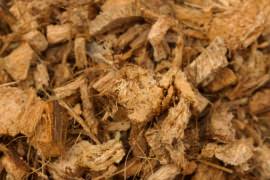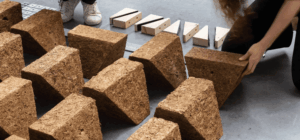Introduction: The Future is Printed
3D-printed homes are no longer a futuristic dream—they’re here, reshaping the construction landscape with promises of affordability, speed, and sustainability. But beyond the innovation of robotic arms and software algorithms lies a deeper conversation: the materials we use to build these homes and their impact on our planet. As the world edges closer to climate tipping points, sustainable housing is not just a trend—it’s a necessity. In this article, we explore the key materials used in 3D-printed homes, their environmental pros and cons, and what it all means for the future of housing.
-
Concrete: The Foundational Giant
What it is: Concrete is the most widely used material in 3D-printed construction, primarily due to its compressive strength and availability. Specifically, 3D printing uses a cement-based mortar that is extruded layer-by-layer.
Pros:
- Readily available and familiar to construction industries.
- High compressive strength.
- Allows complex geometries without traditional formwork.
Cons & Environmental Impact:
- Concrete production contributes to 8% of global CO2 emissions.
- Sand and gravel extraction harms ecosystems.
- High water usage.
Trends Toward Sustainability:
- Use of geopolymer concrete made from industrial by-products.
- Incorporation of recycled aggregates.
- Blending with fly ash or slag to reduce Portland cement usage.
-
Bioplastics and PLA: Green but Limited
What it is: Polylactic acid (PLA) is a biodegradable thermoplastic derived from renewable resources like corn starch or sugarcane. It has found niche applications in smaller, experimental 3D-printed structures.
Pros:
- Biodegradable under industrial conditions.
- Derived from renewable resources.
- Less toxic than petroleum-based plastics.
Cons & Environmental Impact:
- Lower structural strength; unsuitable for load-bearing walls.
- Agricultural sourcing raises concerns about land use and food supply competition.
- Requires specific composting conditions to biodegrade.
-
Recycled Plastics: Giving Waste New Life
What it is: Post-consumer plastics, such as PET or HDPE, are being shredded, melted, and extruded for 3D printing filaments or composites.
Pros:
- Diverts waste from landfills and oceans.
- Reduces demand for virgin plastic.
- Lightweight and water-resistant.
Cons & Environmental Impact:
- Plastic degradation affects strength and durability.
- Potential off-gassing during extrusion.
- Recycling and reprocessing require energy.
-
Clay and Earth-Based Materials: Ancient Meets Futuristic
What it is: Earth-based mixtures like clay, straw, and sand are being re-engineered for extrusion in 3D printing machines. This approach mimics adobe-style construction with 21st-century precision.
Pros:
- Abundant and locally sourced.
- Excellent thermal mass and breathability.
- Fully biodegradable and non-toxic.
Cons & Environmental Impact:
- Vulnerable to erosion and moisture if not sealed properly.
- Lower structural strength.
- Regional variability in soil quality.
-
Hempcrete and Other Composite Innovations
What it is: Hempcrete is a biocomposite material made from the inner fibers of hemp plants mixed with a lime-based binder. It is gaining traction in experimental 3D-printing setups.
Pros:
- Carbon-negative: absorbs more CO2 than it emits.
- Great insulation properties.
- Mold and pest resistant.
Cons & Environmental Impact:
- Not load-bearing; needs a supportive frame.
- Limited scalability and supply chain issues.
-
Innovative Cement Alternatives: Carbon Capture in Action
What it is: Startups are developing alternatives to traditional Portland cement, such as CarbonCure and bio-cement that incorporate captured CO2 or use microbial reactions.
Pros:
- Drastically lower carbon footprint.
- Comparable strength to traditional materials.
- Compatible with existing printing technology.
Cons & Environmental Impact:
- Higher upfront costs.
- Limited market penetration.
Comparative Overview: Which Materials Make the Cut?
| Material | Strength | Sustainability | Cost | Scalability |
| Concrete | High | Medium | Low | High |
| PLA | Low | High | Medium | Low |
| Recycled Plastics | Medium | High | Low | Medium |
| Earth-Based Materials | Medium | High | Low | Medium |
| Hempcrete | Low | Very High | Medium | Low |
| Alt. Cement | High | Very High | High | Growing |
The Bottom Line: Materials Will Define the Movement
As 3D-printed homes move from novelty to necessity, the materials we choose will dictate not only performance but also planetary impact. With the global housing crisis colliding with climate imperatives, there’s no room for materials that are merely efficient—they must also be sustainable. Future success lies in hybrid approaches that combine strength, low emissions, and local sourcing.
For instance, a 3D-printed home using recycled concrete and carbon-sequestering additives can offer both durability and a minimized carbon footprint. Similarly, modular strategies that use hempcrete for insulation and concrete for structure may become the industry norm.
Invest in the Future with Bottom Billion Corporation
At Bottom Billion Corp, we aren’t just watching the future unfold—we’re printing it. Our innovative approach to 3D-printed homes prioritizes planet-first materials, rapid scalability, and life-enhancing design. With pilot projects already changing lives in underserved communities, we’re proving that sustainability and profitability can coexist.
Now is the time to invest. Join us in shaping the next era of affordable, eco-friendly housing solutions. Partner with Bottom Billion Corp and make an impact that lasts generations.
Contact us today to learn how your investment can build homes, restore ecosystems, and create long-term value.



